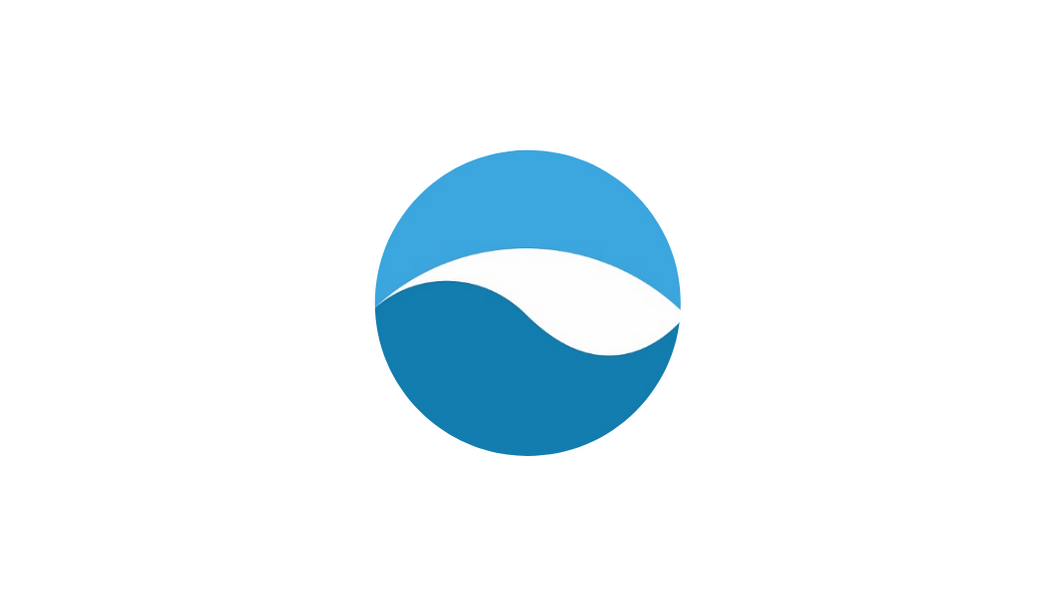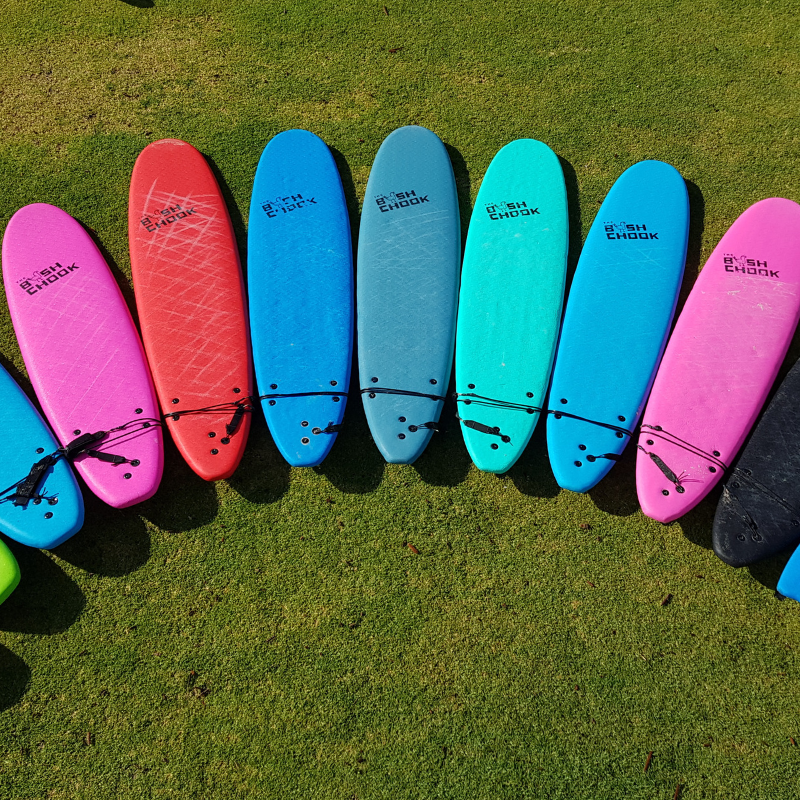Ready to buy your very first surfboard but aren't quite sure which beginner surfboard type is right for you?
It's a common conundrum. There have never been more beginner-friendly surfboards on the market. And while this might sound like a good thing, not all beginner boards are equal. Some are cheapos that won't last a summer season, others are far too expensive for what you're actually getting.
To ensure you don't waste your money on a board that sets you back instead of accelerating your surfing, we've put together this handy guide. In it you'll learn:
The different types of beginner surfboard shapes
What those tiny measurements on a surfboard mean
The number one mistake first-time surfboard buyers make (and how to avoid it)
Tips for choosing a surfboard that's perfect for you
Let's get into it!
Different beginner surfboard types / Longboards, eggs and beyond
Like people, boards come in different shapes and sizes - some of which are good for beginners and others that aren't. Below you'll find the most common beginner surfboard shapes. No matter which one catches your eye, the best beginner surfboards should tick the following boxes:
Long and wide for stability
Thick (with lots of volume) to provide buoyancy
Easy to paddle
Easy to catch waves on
Not too expensive
Surfboard shapes
Soft top/foamie
“Soft top” is the blanket term given to any board with a foam top deck. In terms of beginner surfboards, these are by far the most popular option for first-time buyers and kids alike because they are mostly inexpensive.
Soft top surfboards are usually long and wide with lots of volume, but there are smaller models that are more performance-oriented. The foam tops provide a decent grip for your feet and make the boards exceptionally buoyant. Check out our own beginner soft tops here.
Longboard/Malibu
Longboards or Malibus are, as the name suggests, longer boards that usually measure 8 to 10 feet in length. This extra length and width provide additional stability - perfect for beginners who are still learning to balance. Longboards also feature a rounded nose and can come as either a single or thruster (three) fin setup.
Mini Malibu
The Mini Malibu is the little cousin of the longboard. It's essentially the same shape as a longboard but without the length. This makes it easier to transport and manoeuvre but still large enough to provide a stable ride. Great for confident beginners who want a more nimble first surfboard that doesn't feel cumbersome under the arm.
Egg
The egg is what happens when a typical performance shortboard and a longboard have babies. It's got a round tail and a round nose, but it's much smaller and more agile than a longboard. Again, it's a great choice for beginners who want the maneuverability of a shortboard and the buoyancy of a longboard.
Surfboard measurements / The tiny numbers on a surfboard and what they mean
It's all good to know the different surfboard shapes, but upon finding a board, many beginners are perplexed by the tiny numbers written or printed on the bottom.
These are the surfboard measurements, otherwise known as dimensions or simply dims.
Surfboard measurements are usually written in inches and feet. They also come in three parts: length x width x thickness. Litreage or the number of litres of foam within a surfboard is also a measurement that can help you pick the right board.
All of these dimensions are important, but when it comes to beginner boards, bigger is better (within reason). For the record, most beginners start out with a board of around 8 feet with between 70 and 90 litres.
Below is a guide for understanding surfboard measurements:
Volume
Volume or litreage is a measure of the amount of foam within a surfboard.
The higher the volume, the larger and more buoyant the board. A performance shortboard will have anywhere from roughly 25 to 30 litres of foam, whereas a longboard or soft top might have 40 to 70 litres or more.
Length
This determines how long your surfboard is.
Longer boards have a larger planing surface, which means they paddle well and are easy to catch waves on, but they can also be harder to maneuver. Conversely, shorter boards are easier to maneuver and turn, but they can be less stable. Most beginner longboards will be around 8 feet.
Width
The width refers to the distance between both rails at your board's widest point, which is usually somewhere around the middle.
A wider board will provide more stability, which means it's easier to stand up on and therefore better suited to new surfers. Most beginner longboards will be around 21 to 25 inches wide.
Thickness
Thickness is especially important for beginner surfers since it determines how buoyant your surfboard will be.
A thick surfboard with full rails will sit on top of the water instead of sinking. Again, this helps make paddling easier and assists in catching more waves. Most beginner longboards will be around 3 - 4 inches thick.
Buyer's remorse / The number one mistake first-time buyers make
Now that you know a bit more about the different surfboard types and how to read their dimensions, you should be pumped to go out and buy your first board.
This is where a little bit of restraint goes a long way.
Let us explain.
For most people, it's very exciting buying your first board. After doing a handful of surf lessons or a few surf sessions at Perth’s best beginner surf breaks, you probably feel ready for something thinner and narrower with more of a performance shape.
But here's the thing.
Going from a longboard or soft top to a smaller board when you're still learning the ropes will be the most detrimental thing you can do to your surfing.
Sure, you'll look cool waltzing down the beach with a freshly waxed blade under your arm, but that coolness will come to an abrupt end when you realise you're unable to catch waves and stand up due to the lack of volume.
If you want our advice, try to find a board similar to what you learned with. Yes, you can probably go a smidge smaller… but don't opt for anything that looks like the Formula 1 equivalent of a surfboard.
Choosing the right beginner board / Must-know tips for beginner surfers
Besides giving into your desire to rock a performance board only a few surf sessions deep, there are a few other pitfalls you should try to avoid when buying a board.
By doing so, you'll get a surf craft that keeps both your wave count and your stoke levels high. Here are a few must-know tips to help you do just that:
Seek professional advice
If this all sounds like a lot to take in, keep in mind that surf shops have attendants who specialise in matching beginners with the right surfboard. So if you're unsure as to which board is best for you, head to your local surf shop. Staff will be happy to point you in the right direction - just remember to be honest about your skills!
Remember... looks aren't everything
We get it. It's tempting to want to buy the best-looking board in the shop, especially if it's got some fancy artwork on the bottom.
But looks shouldn't be your foremost concern - remember that you want a board with enough buoyancy and stability to help you get up and riding. In all situations, the better suited the board to your skill level, the more waves you’ll catch and the faster you’ll learn.
Consider cost vs. length of use
We often equate the price of a product with its value. And while quality does come at a cost, it doesn't make sense to blow your savings on a top-of-the-line soft top or longboard.
For one, you don't need the best board out there - you just need the one that's right for you. And two, as a beginner you'll advance quite quickly. This means that you'll most likely need to upgrade to something smaller after mastering the basics (assuming that you're surfing often enough to progress in a short-ish amount of time).
Book a lesson before you buy
If you not only want to test out what surfing on a beginner board feels like, get beginner surf tips from an expert AND talk to someone in the know about which surfboard is right for you, booking a lesson is the easiest and fastest way to do so.
Conclusion
Ready to buy a beginner surfboard (or get one as a gift for that special would-be shredder in your life)? It's easier than you think!
With the help of this guide, you should now have a better understanding of the different surfboard types, what dimensions really mean and how to avoid the common mistakes beginner surfers make when buying their first board. With such knowledge under your belt, all that's left is for you to head out there and get surfing!
Good luck and happy waves!
















